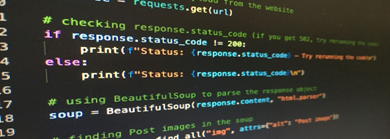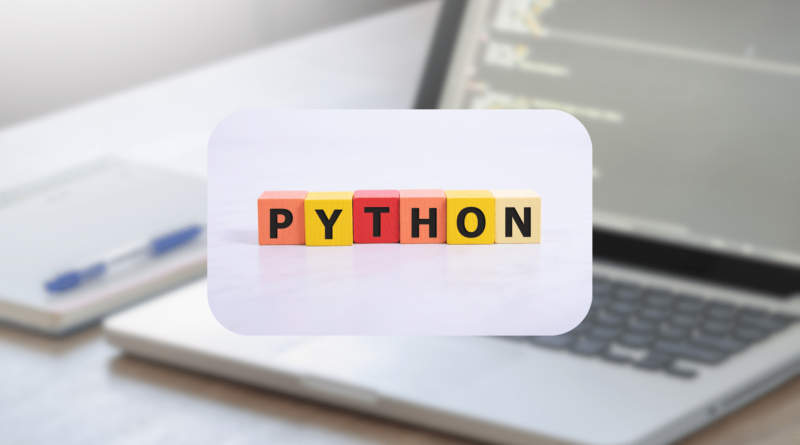Technical Aspect of Translation Studies: On the Role of Python Programming Language
Technical Aspect of Translation Studies: On the Role of Python Programming Language
Every aspect of life is impacted by technology, which also accelerates and transforms professional practices, including translators’ work habits. Recognizing that translation cannot be accomplished without human involvement, it becomes crucial to explore methods for minimizing human effort in the translation process. These factors lead researchers to search for some solutions. In this field, many technological tools and methods are used to optimize translation studies. The use of programming languages is one of the most effective solution to use in this process. Since I started following research, especially on the relationship between human translation and machine translation, understanding the technical aspect of translation has become an interesting topic for me. Let’s assume that in just a few steps your translation output can be emotionally analyzed or tested for lexical diversity. In this way, you can make comparisons between translations and be one step ahead in completing the missing points. How can a technical tool have such a huge impact on translation studies?
Python is one of the programming languages with its rapidly growing user base. There are even claims that Python has left all its competitors behind (The Economist, 2018). It’s use in the field of translation is quite common and, thanks to its flexible language, it can be used in various fields. As technological developments in the translation industry progress, Python’s role is constantly increasing.
Compared to other programming languages, it has a simpler structure and easier, more understandable syntax. Its straightforward structure enables developers to write concise and readable code, facilitating the translation process. Furthermore, Python’s extensive libraries and built-in functions provide support for handling various types of data, which is crucial when working with translated content. This combination of simplicity, readability, and powerful functionality makes Python a preferred choice for translation projects, allowing developers to efficiently manage and process language data with ease.

Python can be used in various scenarios. As I mentioned above, just as the translation process requires a large amount of time, the evaluation process of the outputs also requires an equal amount of time. Let’s suppose that we are making an evaluation between human translation and machine translation. As we know, sometimes the findings obtained from machine translation can be inaccurate or meaningless. When an evaluation is desired at this point, Python’s flexible structure and rich library support meet this need. Thanks to Python, quality assessment analysis facilitates a comprehensive evaluation of translation output. It allows developers to identify and resolve potential problems with translation systems. Translation quality assessment analysis can be key to determining how close machine translation outputs are to human translation quality. For example, the creativity score of translation outputs can provide an assessment. A study based on lexical diversity analysis conducted by Brglez and Wintar (2024) is just one of the extensive studies conducted in this area with Python. By using Python, they obtained a creativity assessment based on lexical diversity in the Slovenian-English language pair. This study concluded that, although the diversity in neural machine translation is significant, it is not comparable to human creativity.
Python plays a significant role in translation research as it can also analyze the emotional tone between texts translated with different methods, This is called sentiment analysis. In particular, this method allows you to measure positive or negative sentiments in your translations. Karcıoğlu and Aydın (2024) were able to conduct such a study on Twitter comments in the Turkish-English language pair by using Python. In their study, they used Python’s scikit-learn library for both base classifiers. Thus, they were able to compare and classify comments in both language pairs. Therefore, Python has once again proven to be useful in measuring sentiment analysis.
Text similarity analysis is another feature that can help you make progress in your translation works with Python. Thanks to text processing and natural language processing libraries in Python, it is possible to measure the similarities between texts in the translation results. To put it clearly, text similarity measures how much the meaning or content of two pieces of text are the same. Text similarity can be used to find the equivalent of a text in the source language in the target language. For example, a translation model can match a sentence or word in the source text to its most appropriate equivalent in the target language based on similarity criteria. Python has a large NLP (Natural Language Processing) and machine learning ecosystem to perform such operations. Therefore, Python is a widely preferred language and platform to implement text similarity feature in translation work. In this field, Qian et al. (2019) used Python’s text similarity measurement features to provide insights into machine and human translation. By using Python, similarities between human and machine-generated outputs were calculated and the data was presented in terms of fluency and proficiency. The study found that machine-generated results exhibited significantly poorer proficiency performance compared to their human counterparts. This provided valuable insights into the nuances of both human and machine-generated translations, highlighting Python’s potential as a powerful tool for measuring translation quality, particularly in the area of text similarity.
As a result, Python emerged as an important element in the field of translation studies and offers profound benefits that improve the quality and effectiveness of translation efforts. Its powerful features, including the capacity to understand and manipulate syntax, grammar, and semantic structures, enable translators to achieve greater accuracy and fidelity in their translations. Moreover, the integration of Python into translation processes is key to allowing the exploration of various language functions, leading to more nuanced and contextually appropriate interpretations. In this form, Python remains an indispensable tool that raises the standards of translation studies.
References:
- Brglez, M., & Vintar, Š. (2022). Lexical diversity in statistical and neural machine translation. Information, 13(2), 93.
https://doi.org/10.3390/info13020093
- Briseño, O. A. (2023). Natural language processing and text analysis: Unlocking the power of language with Python.
LinkedIn. https://www.linkedin.com/posts/oscar-alfonso-tello-brise%C3%B1o-69732089_natural-language-processing-
and-text-analysis-activity-7153923573709929984-Vx4Z
- Karcıoğlu, A. A., & Aydin, T. (2019). Sentiment analysis of Turkish and English Twitter feeds using Word2Vec model. In
2019 27th Signal Processing and Communications Applications Conference (SIU), Sivas, Turkey (pp. 1-4). IEEE.
https://doi.org/10.1109/SIU.2019.8806295
- Krüger, R. (2021). An online repository of Python resources for teaching machine translation to translation students.
Current Trends in Translation Teaching and Learning, 8, 4–30. https://doi.org/10.51287/cttle20212
- Liu, W., & Zou, J. (2023). A study on the acceptance of the English translation of Romance of the Three Kingdoms by
overseas readers based on Python data analysis technology. Sino-US English Teaching, 20(5), 187-194.
https://doi.org/10.17265/1539-8072/2023.05.005
- Qian, M., Liu, J., Li, C. (J.), & Pals, L. (2019). A comparative study of English-Chinese translations of court texts by
machine and human translators and the Word2Vec based similarity measure’s ability to gauge human evaluation biases.
Proceedings of MT Summit XVII, Volume 2, 95. Dublin, Aug. 19-23.
- The Economist. (2018, July 26). Python is becoming the world’s most popular coding language. The Economist.
https://www.economist.com/technology-quarterly/2018/07/26/python-is-becoming-the-worlds-most-popular-coding-
language
- Tosun, E. (2023). Makine çevirisi programları ve farklı metin türü kesitlerinin makine çevirisi çıktıları üzerine bir inceleme.
Çeviribilim Özel Sayısı, 499-513.
- Van Otten, N. (2022, December 19). Top 7 ways to implement document & text similarity in Python. Spot Intelligence.
https://spotintelligence.com/2022/12/19/text-similarity-python/
- Xu, H. (2024). The design and construction of Python assisted instruction for English translation. Shandong Xiehe
University. https://dx.doi.org/10.4108/eai.13-10-2023.2341238
Visual References:
- https://innovationspace.ansys.com/product/intro-to-python/
- https://www.linkedin.com/pulse/python-programming-zos-walter-klaey





